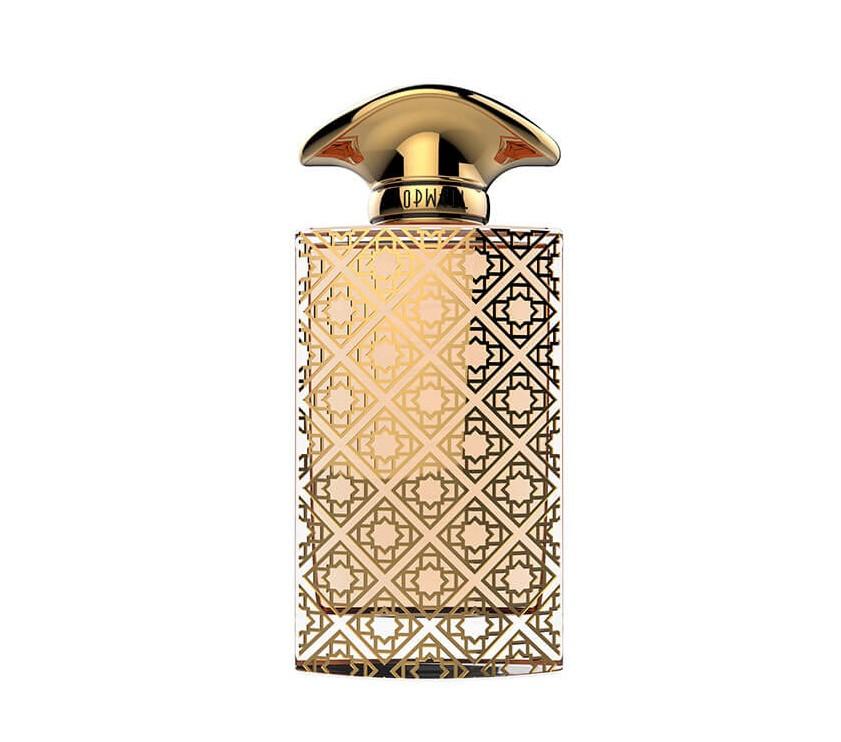Introduction
In the world of fragrances, the perfume bottle serves as a vessel for storing scents and a canvas for art and creativity. The choice of materials for perfume bottles plays a pivotal role in preserving the integrity of the fragrance and leaving a lasting impression on consumers. This article delves into the fascinating realm of perfume bottle materials, exploring how cutting-edge innovations impact fragrance preservation and shape consumer perception.

The Role of Perfume Bottle Materials in Fragrance Preservation
Preserving perfumes' delicate and complex compositions requires carefully considering the bottle's material. Traditional materials like china and decorative perfume bottles have long been cherished for their elegance and intricacy. However, they may not always offer the best protection against external factors that can degrade fragrances.
- China Perfume Bottles: Admired for their exquisite craftsmanship, china perfume bottles showcase a delicate charm. Nevertheless, their porous nature can make them susceptible to air and moisture infiltration, potentially affecting the fragrance's longevity.
- Decorative Perfume Bottles: Often adorned with ornate designs and precious gemstones, decorative perfume bottles capture attention as collectibles. Yet, the focus on aesthetics might compromise the preservation of the perfume's delicate notes.
-
Fortunately, innovative materials have emerged to address these concerns and revolutionize the industry.
Cutting-edge Perfume Bottle Materials
1.Borosilicate Glass
- Personalized Perfume Bottles: Borosilicate glass offers an excellent medium for personalized perfume bottles. Its malleability allows for unique shapes and designs, catering to consumers' preferences. Moreover, its non-porous nature ensures the fragrance remains untainted, preserving its original olfactory character.
-
- 2.Ultraviolet-Blocking Polymers
- Frosted Glass Perfume: Frosted glass perfume bottles, crafted from UV-blocking polymers, have recently gained popularity. These bottles provide a stylish and contemporary look while protecting against harmful UV rays, safeguarding the fragrance from deterioration.
-
- 3.Biodegradable Plastics
- Sustainable Packaging: In response to growing environmental concerns, biodegradable plastics have emerged as a sustainable alternative. Manufacturers are reducing their ecological footprint by using biodegradable materials for perfume bottles while ensuring optimal fragrance preservation.
-
- 4.Ceramic and Porcelain
- Artistic Expression: The resurgence of ceramic and porcelain materials in perfume packaging showcases a harmonious blend of art and functionality. These materials preserve the fragrance and add a touch of luxury to the overall sensory experience.
-
Consumer Perception and Packaging
A perfume's packaging profoundly influences consumer perception and purchasing decisions. Understanding how innovative materials impact consumer attitudes is essential for fragrance houses.
- Eco-Friendly Appeal: With rising awareness of environmental issues, consumers gravitate toward sustainable packaging. Biodegradable plastics and other eco-friendly materials resonate with environmentally-conscious customers, enhancing the brand's appeal.
- Luxury Redefined: Personalised perfume bottles made from cutting-edge materials redefine luxury, shifting the focus from conventional opulence to individuality and sustainability. Customers seek a unique, upscale experience that aligns with their values.
- Aesthetic Pleasure: Frosted glass perfume bottles exude sophistication and modernity, capturing the attention of trend-sensitive consumers. The tactile experience of holding an intricately designed borosilicate glass bottle enhances the overall enjoyment of the fragrance.
- Brand Identity: The material choice reflects a brand's identity and values. Incorporating innovative materials aligns the brand with innovation, progressiveness, and commitment to preserving the fragrance's integrity.
- Emotional Connection: Perfume bottles crafted from cutting-edge materials establish an emotional connection between the consumer and the product, evoking a sense of exclusivity and authenticity.
- Longevity and Value: Consumers perceive products packaged in innovative materials as valuable investments. These bottles protect the fragrance and become keepsakes cherished for years to come.
-
Expert Recommendations for Buyers
Selecting the suitable perfume bottle material is integral to the fragrance purchasing process. Here are some expert recommendations to help consumers make informed decisions:
- Assess Fragrance Characteristics: Consider the perfume's composition, sensitivity to light, and susceptibility to air exposure. Opt for UV-blocking polymers or borosilicate glass for light-sensitive fragrances, while biodegradable plastics suit eco-conscious consumers.
- Personalization Options: Embrace the trend of personalized perfume bottles made from borosilicate glass, allowing consumers to showcase their individuality through custom designs and engravings.
- Sustainability Matters: Choose brands that prioritize sustainability and environmental responsibility. Biodegradable plastics or sustainable packaging materials align with conscious consumer choices.
- Quality and Craftsmanship: Evaluate the craftsmanship and material quality, especially for ceramic and porcelain bottles. Well-crafted vessels contribute to the overall aesthetic appeal of the fragrance.
- Embrace Emotional Connection: Let the bottle speak to your emotions and resonate with your tastes. The material and design should evoke a sense of joy and connection with the fragrance.
Challenges and Future Directions
As the demand for innovative perfume bottle materials grows, the industry faces several challenges. Balancing sustainability and aesthetics while ensuring fragrance preservation requires ongoing research and development.
- Cost Considerations: Some cutting-edge materials may come at a higher price point, impacting production costs and final product pricing.
- Sustainable Sourcing: Ensuring a reliable supply chain of sustainable materials is essential for brands committed to environmental stewardship.
- Waste Management: Biodegradable plastics necessitate proper waste management and disposal to maximize their eco-friendly potential.
- Innovative Designs: Continually pushing the boundaries of design and material application will be essential to captivate evolving consumer preferences.
- Consumer Education: Educating consumers about the benefits and value of cutting-edge materials will influence their purchasing decisions positively.
-
Conclusion
Innovations in perfume bottle materials have redefined the industry, merging artistry, sustainability, and fragrance preservation. Whether it's the personalized charm of borosilicate glass, the contemporary allure of frosted glass perfume bottles, or the eco-luxury of biodegradable plastics, the choice of material reflects the brand's identity and values. Consumers can now indulge in an exquisite sensory experience, holding not just a fragrance but a captivating story etched in cutting-edge materials.
